
Home » Carve » Tools » Jade & Gemstone Tools » Polishing Jade
There are MANY ways to skin the proverbial cat when it comes to finishing jade with a polish. For the jade tent, the tried and true method for our purposes is with hard felt wheels that accept diamond compounds that start at 14,000 and top off at 50,000. Maple wood is also used for polishing. Compound is applied to these customized mounted wheels, discs, spheres and bullets which can be used in point carvers, and handpieces.
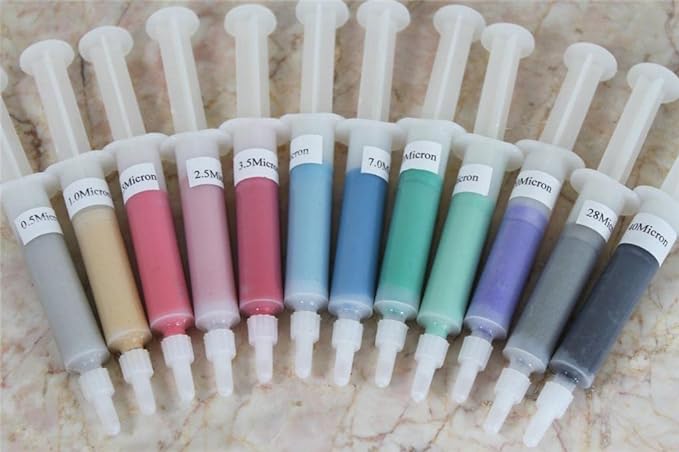
Polishing compounds, commercial vs DIY – Commercial tubes can be purchased from a variety of on-line vendors or from a lapidary store at a reasonable cost. They come in either an oil or water soluble paste, 450 grit (40 micron) to 30,000 grit (.5 micron). Making one’s own diamond compound may not be as economical as in the past, but being able to increase to amount of diamond powder to the mix, making large batches if needed, and having a neutral color vs the blues, reds, etc.. that commercial brands come in, is a worthy option. The ingredients, Vaseline, Lipstick and 14,000 grit (1micron) diamond powder are measured and combined to form a polishing compound.
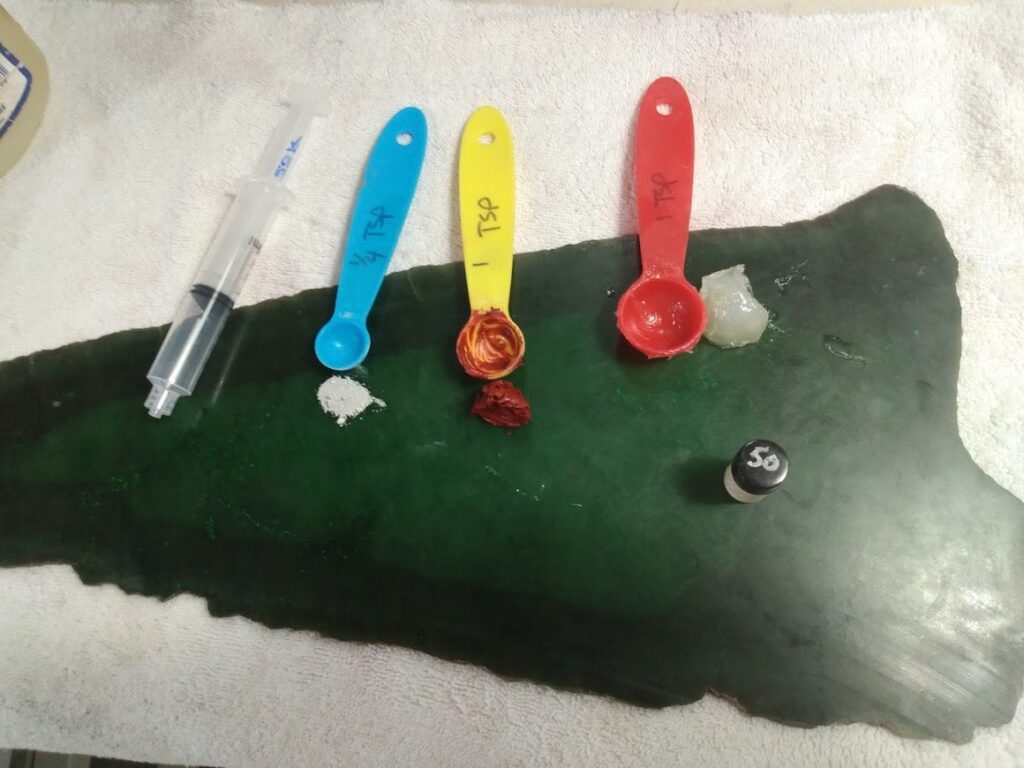
The Formula! First, find a clean flat surface to work on, IE a marble tile. 12 x 12” or larger. Have the ingredients ready: diamond powder, ( cheap) Lipstick , Vaseline, a palette knife, and a medical syringe. Carefully measure ¼ tsp of powder and place onto the tile, next 1 tsp of lipstick in a separate spot on the tile, then 1 tbs of Vaseline in a 3rd spot. Mix all 3 together with the palette knife, and scoop the mixture into the syringe after removing the plunger. Label it according to the grit size. IE 100/300/600/14,000/50,000.etc For a Neutral color and lipstick substitute – Try Kaolin clay powder, same proportions to the powder and Vaseline. Available at ceramic supply outlets. Chinese carvers most likely use Kaolin in their compounds.

Google says: Kaolin is an aluminosilicate soft white mineral named after the hill in China (Kao-ling) from which it was mined for centuries. In its natural state kaolin is a white, soft powder consisting principally of the mineral kaolinite, and varying amounts of other minerals such as muscovite, quartz, feldspar, and anatase. Kaolin clay has a high fusion temperature, and its naturally bright white color makes it useful for manufacturing pure white ceramics, porcelain, china, sanitary ware and kaolin pottery. Because kaolin contains low concentrations of iron or alkalis, it is ideal for use in various forms of ceramics.
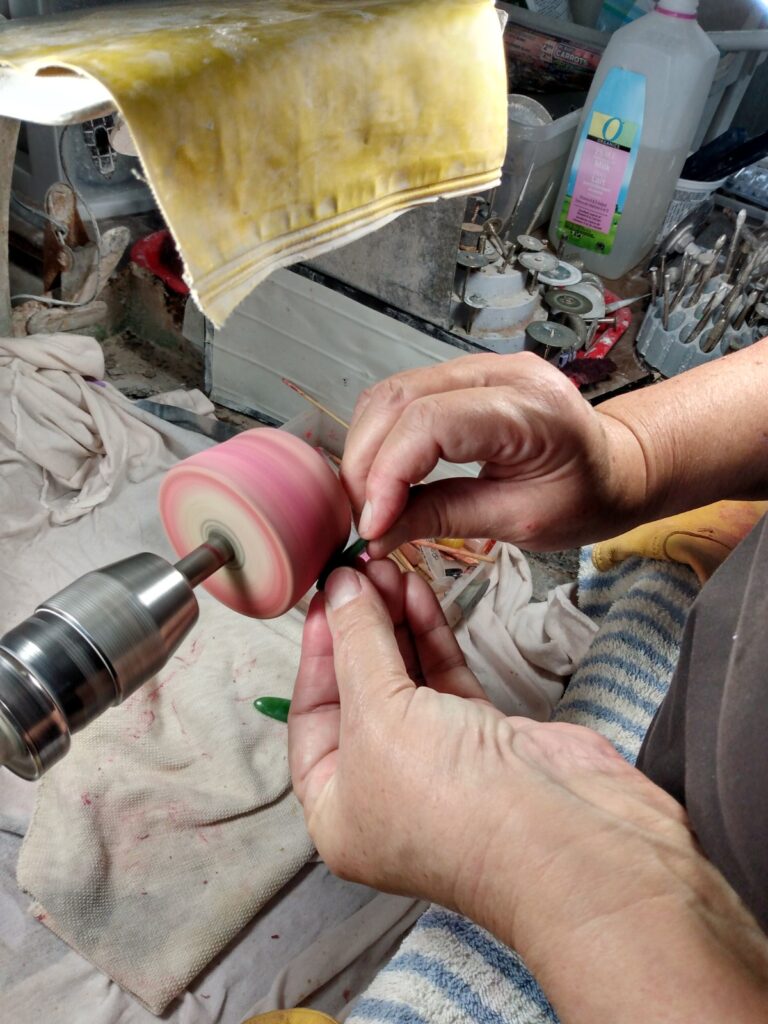
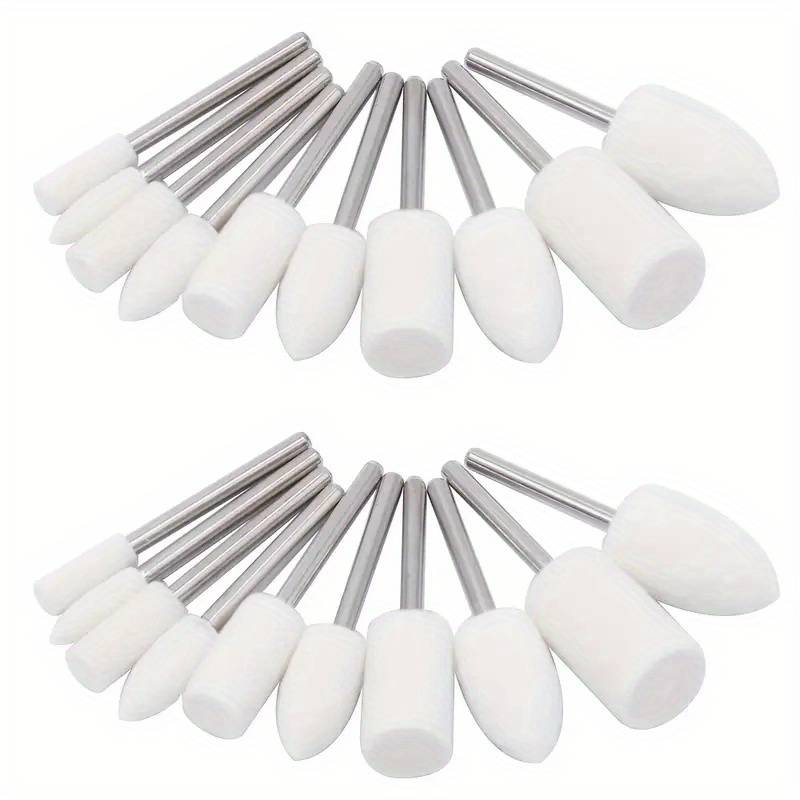
Hard felt is what is used in lapidary, soft felt is not! Tool and die makers use this term as well as lapidary artists….”Bobs” are made from hard felt aka compressed wool, and are mounted on 1/8” or 1/4″ mandrels.
Sometimes maple wheels are used to hold the compound, for more specific finishing ie recessed areas and for micro detail.
The paste is applied onto a hard felt pad, bob, or maple wheel in a process called charging.

Charging simply means applying compound to the hard felt or (maple wood) polishing wheel and rubbing it in by hand. It’s best to warm up the felt wheel first by running it over the stone briefly after adding just a bit first, to prevent burning the wheel and the jade.
Once warmed up, apply again more liberally all around the wheel and rub it in well to ensure an even coverage, especially the edges.
The piece is then worked with the spinning felt and compound.
The heat created with a slight pressure of the jade against a charged hard felt wheel will produce a polish. Too much pressure will result in a heat build up that will burn jade, leaving a deep white spot that has to be sanded out. With experience one will be able to gauge that pressure factor confidently.
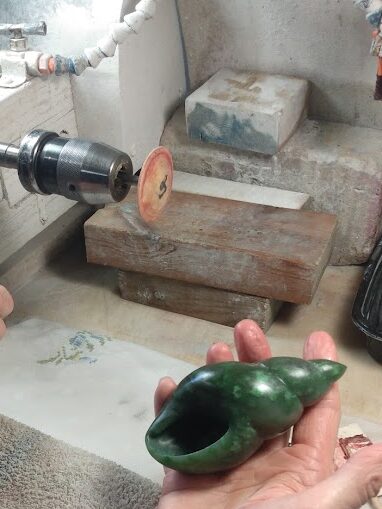
Pictured here is jade shell carved at my home based workshop in 2023. In the point carver, we have a custom made maple disc on a ¼” mandrel with a slightly rounded thin rim. It has been charged with 300 grit diamond compound. The spiral line on the shell can be sanded this way, it’s faster than any other method. From 300 grit, one uses a similar disc that has been charged with 600 grit to finish the sanding of that spiral line. Polishing can be achieved the same way with, you guessed it, a polishing disc charged with 14,000 grit diamond compound.
Keeping the sanding and polishing discs made from maple wood separate is imperative. (contamination issues!) This goes for any other shapes made from maple dowelling. Useful shapes are bullets, inverted cones, spheres, not to forget bamboo culinary skewers for micro sanding and polishing. A drawer system for felt bobs and shaped wood points /wheels etc is recommended, IE each grit size has a dedicated drawer for felts and wood.
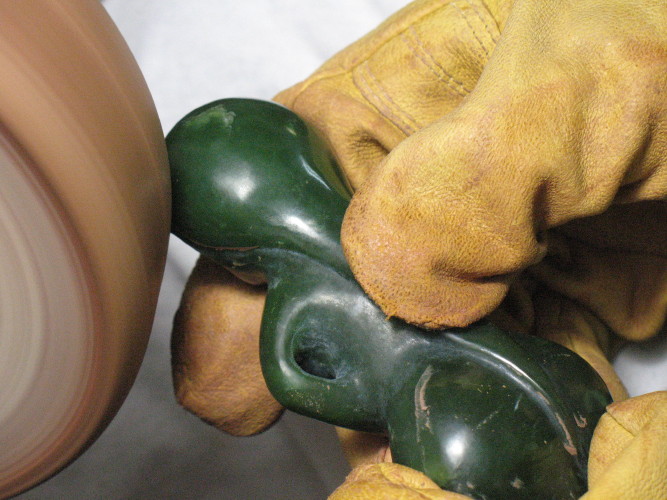
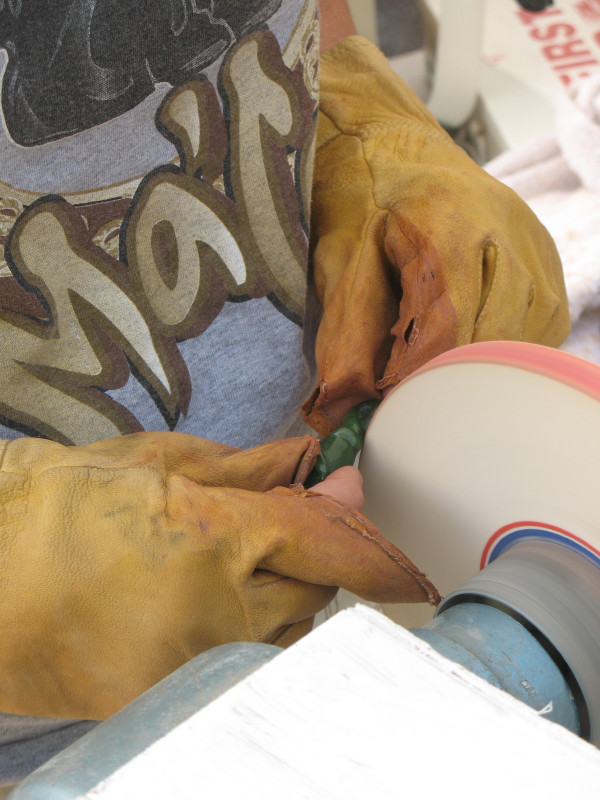
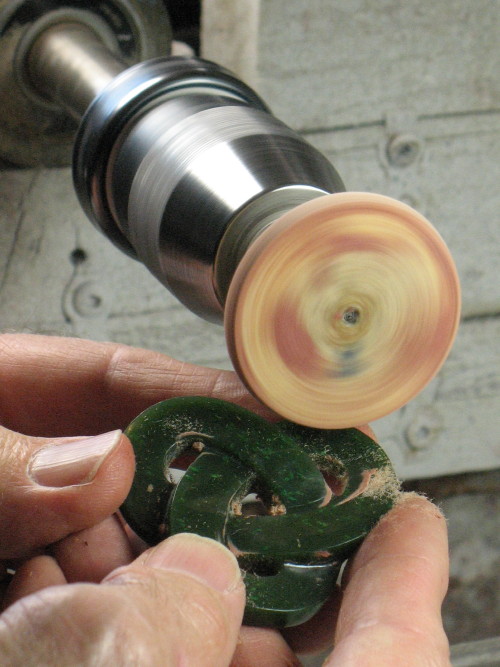










We need some kind of descriptive text here.